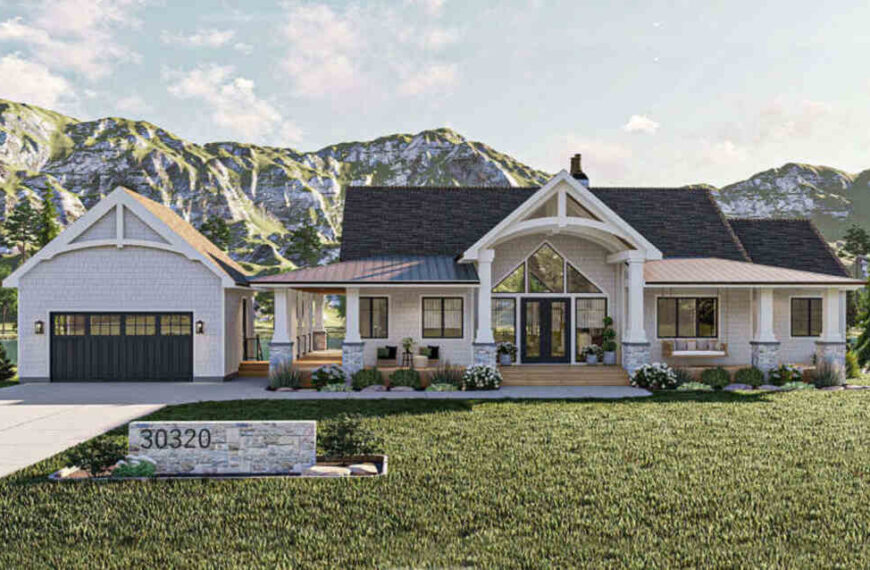Transforming a yard into a beautiful and functional space around trees involves a blend of aesthetics and practicality. Trees, with their grandeur and natural beauty, can serve as the focal points of a yard. However, landscaping around them requires careful planning to ensure the design is visually appealing and beneficial for the trees’ health. This article explores various strategies to create a yard that enhances the beauty of your trees and maximizes functionality.
Understanding Your Trees
Before embarking on the design process, it is essential to understand the specific needs and characteristics of the trees in your yard. Different species have varying requirements for sunlight, soil, water, and space. For instance, oak trees typically have extensive root systems that can be easily damaged by heavy construction, while birch trees prefer moist, well-drained soil. Knowing these details will help you decide what plants and features can coexist harmoniously with your trees.
Soil and Root Health
The health of the soil and roots is paramount when designing a yard around trees. Compacted soil can restrict root growth and reduce oxygen levels, which is critical for tree health. Avoid heavy foot traffic and construction close to the tree base to prevent soil compaction. Mulching is an effective method to improve soil quality and moisture retention. Apply a layer of organic mulch, such as wood chips or bark, around the tree’s base, extending to the drip line. This nourishes the soil and adds a neat, finished look.
Watering Considerations
Trees have specific watering needs that must be considered in your landscape design. Overwatering can be as detrimental as underwatering, leading to root rot and other health issues. Install a drip irrigation system to deliver water directly to the roots, ensuring that the trees receive an adequate amount without excess runoff. This system is also water-efficient, reducing wastage and promoting sustainable gardening practices.
Designing Around Trees
Once you understand your trees’ requirements, the next step is to design the space around them. A successful design will enhance the trees’ natural beauty while creating a functional and inviting environment for human use.
Pathways and Walkways
Incorporating pathways and walkways is a practical way to navigate your yard without disturbing the trees. These can be constructed from various materials, including gravel, stone, or pavers. When planning the layout, consider the root zones of your trees. Raised pathways or stepping stones can minimize soil compaction and root damage. Additionally, pathways can guide visitors through your yard, highlighting the beauty of your trees and other landscaping features.
Seating Areas
Creating seating areas around trees can provide shaded, tranquil spots for relaxation and enjoyment. Benches, swings, or hammocks can be strategically placed to take advantage of the natural shade offered by the tree canopy. When choosing furniture, choose materials that blend seamlessly with the natural surroundings, such as wood or stone. Ensure that the seating is positioned in a way that does not interfere with the tree roots or lower branches.
Planting Beds
Planting beds around trees can add color and texture to your yard while protecting the tree roots. Select plants that thrive in the specific conditions under your trees, such as shade-tolerant perennials or ground covers. Hostas, ferns, and astilbes are excellent choices for shady areas. Avoid disturbing the roots and use a no-dig gardening method to preserve the soil structure when planting. Incorporate a variety of plant heights and textures to create visual interest and a naturalistic feel.
Functional Enhancements
In addition to aesthetic improvements, consider incorporating functional elements that enhance the usability of your yard. These features can range from outdoor lighting to water features, all designed to create a versatile outdoor space.
Outdoor Lighting
Proper lighting can transform your yard into a magical space after dark. Use soft, ambient lighting to highlight the trees and other landscaping features. Solar-powered lights are an eco-friendly option that can easily be installed along pathways and around seating areas. Uplighting, where lights are positioned at the base of trees to shine upward, can accentuate the tree’s structure and create dramatic effects. Consider using motion-sensor lights for added security and convenience.
Water Features
Water features such as fountains, ponds, or small waterfalls can add a serene, calming element to your yard. When installing a water feature near trees, ensure it does not disrupt the root system or drainage patterns. A well-placed fountain or pond can serve as a focal point, drawing attention to the surrounding trees and enhancing the overall ambiance. Additionally, water features can attract birds and other wildlife, adding to the ecological diversity of your yard.
Play Areas and Functional Zones
For families with children, incorporating play areas can make the yard more functional and enjoyable. Consider installing a treehouse, swing set, or sandbox in the regions that do not interfere with the trees’ health. Use natural materials and ensure that play structures are securely anchored and safe. Designate zones for specific activities, such as gardening, outdoor dining, or relaxation, to create a versatile and organized space.
Maintenance and Care
Maintaining a beautiful and functional yard around trees requires ongoing care and attention. Regular maintenance ensures that the trees and the landscape features remain healthy and attractive.
Pruning and Trimming
Regular pruning and trimming are essential for maintaining the health and appearance of your trees. Remove dead or diseased branches to prevent the spread of infection and improve air circulation. Pruning also helps shape the tree and control its size, ensuring that it does not overpower other elements of your yard. When pruning, use sharp, clean tools to make precise cuts and avoid damaging the tree.
Soil and Mulch Management
Monitor the soil and mulch around your trees to ensure optimal growing conditions. Replenish mulch annually to maintain a consistent layer that protects the roots and conserves moisture. Avoid piling mulch against the tree trunk, leading to rot and pest infestations. Test the soil periodically to check for nutrient deficiencies and pH imbalances and amend it to support healthy growth.
Pest and Disease Control
Trees can be susceptible to various pests and diseases, which can affect their health and the overall aesthetics of your yard. Regularly inspect your trees for signs of infestation or illness, such as discolored leaves, unusual growths, or the presence of insects. Early detection allows for prompt treatment, reducing the risk of severe damage. Use organic pest control methods whenever possible to minimize environmental impact.
Conclusion
Creating a beautiful and functional yard around trees is a rewarding endeavor that enhances the natural beauty of your landscape while providing practical benefits. Understanding your trees’ needs and thoughtfully designing the space around them can create a harmonious and inviting outdoor environment. Incorporate pathways, seating areas, planting beds, and functional enhancements to maximize the usability and enjoyment of your yard. With regular maintenance and care, your yard will continue to thrive and be a source of beauty and tranquility for years.
Also Read Interesting articles at Amazing Posting













